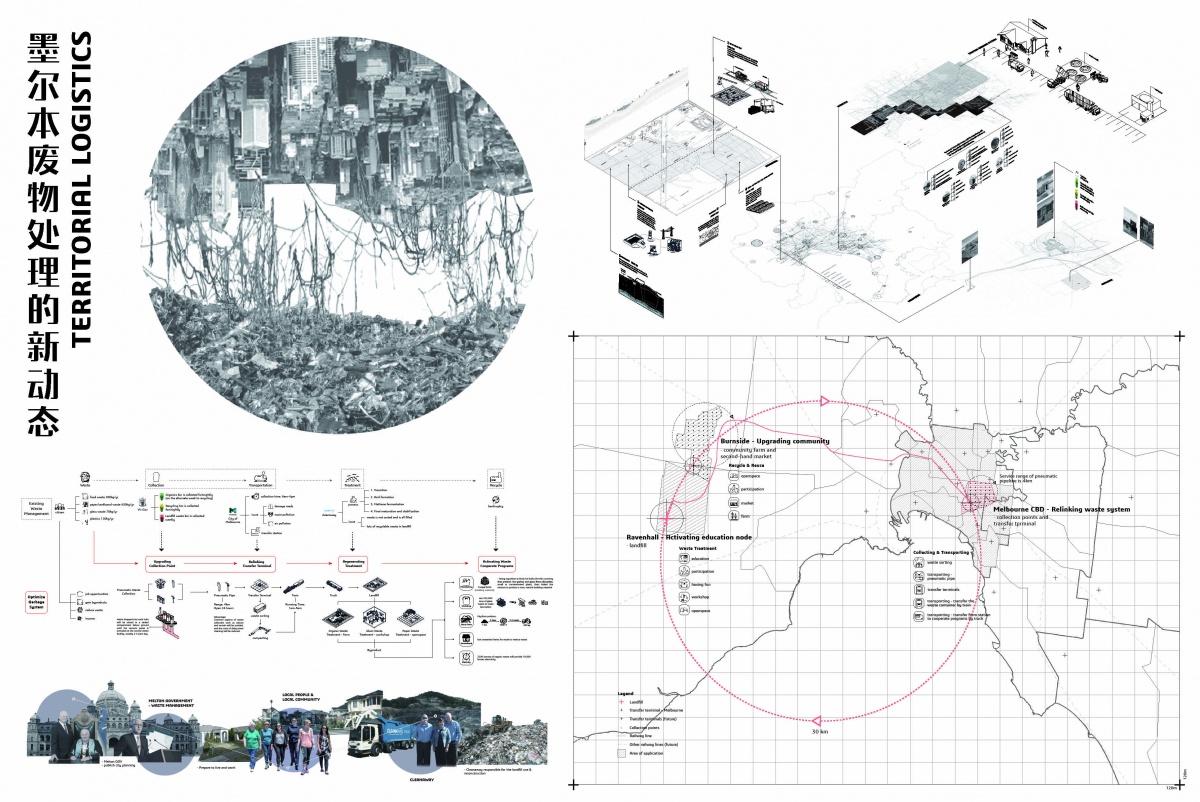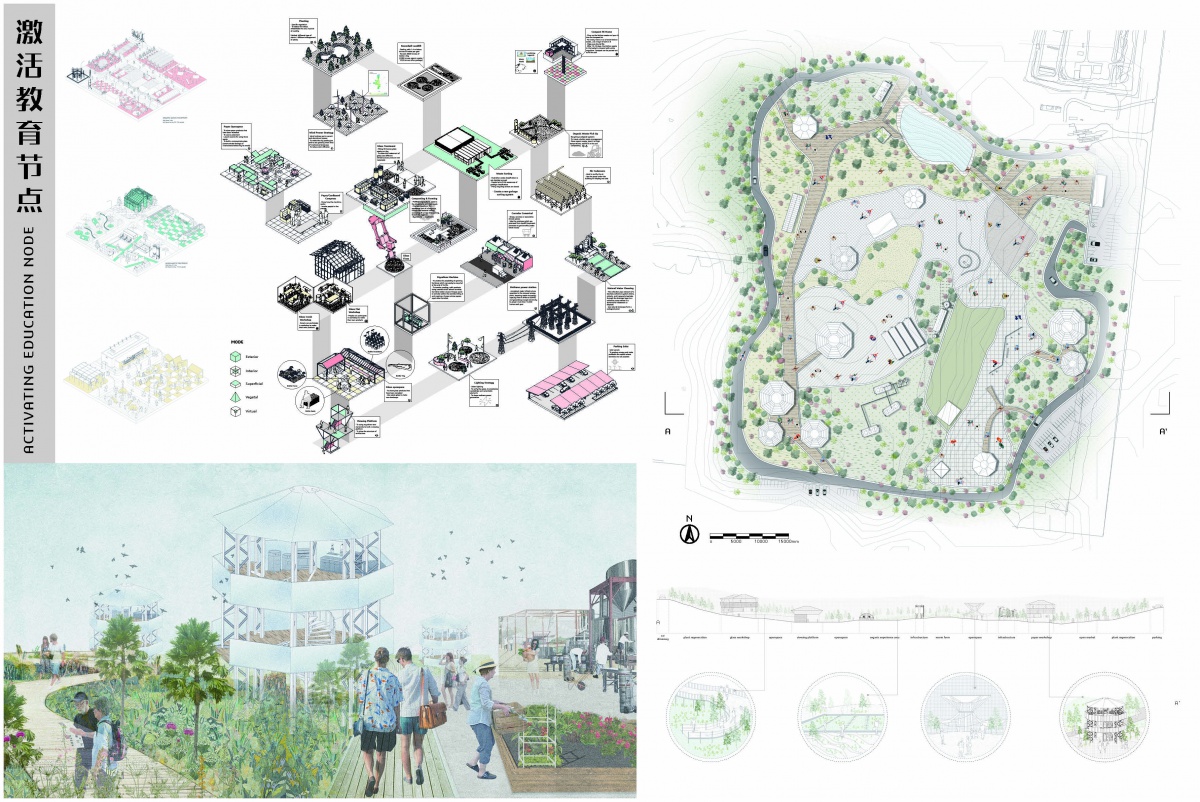
主创设计:林丹怡
设计成员:无
指导老师:Martin Woodbine Zoe Loomes
作品编号:ILIA-S-20208181
参赛组别:学生组
作品类别:方案设计 - 城乡公共空间
 0
0项目详情
设计说明
设计感悟
设计亮点
评论
项目详情
申报类别:作品奖
项目名称:墨尔本废物处理的新动态
院校名称:墨尔本皇家理工大学Royal Melbourne Institute of Technol
指导老师:Martin Woodbine Zoe Loomes
主创姓名:林丹怡
成员姓名:无
设计时间:2019-03-07
项目地点:墨尔本
项目规模:城市
项目类别:方案设计-城乡公共空间
设计说明

Melbourne waste plan
The vision of a series of collection facilities and pneumatic pipes spread across the districts of Melbourne challenges the way infrastructure is planned and designed, opening a dialogue on how a city should transform its infrastructural systems to adapt to future challenges. The vision of a series of collection facilities and pneumatic pipes spread across the districts of Melbourne challenges the way infrastructure is planned and designed, opening a dialogue on how a city should transform its infrastructural systems to adapt to future challenges. Moreover, the relationships between showing the dynamic process of landfill for the public and community openspaces for community garden and second-hand market and the city by the force of juxtaposition, making connections between the apparently disparate aspects of urban life to establish a more tangible and accessible opportunity for urban dwellers, as well as the government and local businesses to become more involved in waste issues. Just as the problem of climate change cannot be solved either at the level of individual citizens or at the level of an organisation, achieving a more sustainable waste system will require alliances between groups tackling similar problems, and compromises in the face of competing issues, empowering all stakeholders and distributing responsibilities amongst the different parts of the trash logistics to arrive at a collective goal.

Relinking melbourne waste system
The department of waste management has established a series of garbage transport and treatment networks, which increase and promote the mode of urban waste transport, change people's understanding of waste classification, and improve the traffic pressure caused by waste transport, which will reshape the mode of urban waste.

Activating education node - Ravenhall landfill
Melton government provided education and funding programs on waste and resource recovery. It will Ravenhall landfill as education pilot, publicly introduced the dynamic life of landfills, engages everyday users in its metabolic process, and shifts the perception of waste treatment from an industry happily ignored to a dynamic public landscape and the source of new materials and ideas. People can learn various of the activities of "reduce and recycle" which can undertake at home.

Upgrading Burnside community
Through the public introduction of Ravenhall landfill, the communities began to organize some activities in the process, the establishment of related workshops and open markets, let people can in their home and community to ‘reduce and recycle’ waste.
设计感悟
设计亮点
Furthermore, the interrelationships between different infrastructural systems such as collection points, transfer terminals and landfills, and their potential integration offers an opportunity for further research. In essence, this thesis has demonstrated that systems planning has the potential to open up dialogues between the city and all the stakeholders that are collectively in pursuit of a more sustainable urban future, understanding that by investing in the city's infrastructure systems, we are simultaneously investing in our society, the welfare of our environment, our physical health and well-being, and our sense of civic responsibility.











 京公网安备 11010202009564号
京公网安备 11010202009564号
全部评论0